Marsh Marigold (Caltha palustris) – Identification and Use
Marsh Marigold, Caltha palustris – Weekly Weeder #45 – range and identification, role as a wildlife habitat, uses for food and medicine.

Marsh marigold (Caltha palustris) is also known as yellow marsh marigold and cowslip. It is a member of the Family Ranunculaceae or Buttercup Family.
Caltha palustris should not be confused with the European native Primula veris, which is also commonly known as cowslip, and is a member of the primrose family, Primulaceae. The two plants are similar in color.
Is Marsh Marigold Invasive?
Caltha palustris is not invasive where I live in Wisconsin. Marsh marigold is native to North America. (See the range map below.)
Where is Marsh Marigold Found?
As you would expect from the name, it prefers marshes, wet meadows, and the edges of lakes and streams. This makes them a good choice for water gardens.
They prefer full sun, but tolerate dappled shade. The bold yellow flowers fill woodland edges in our area in early spring, lighting up the dappled forest floors.
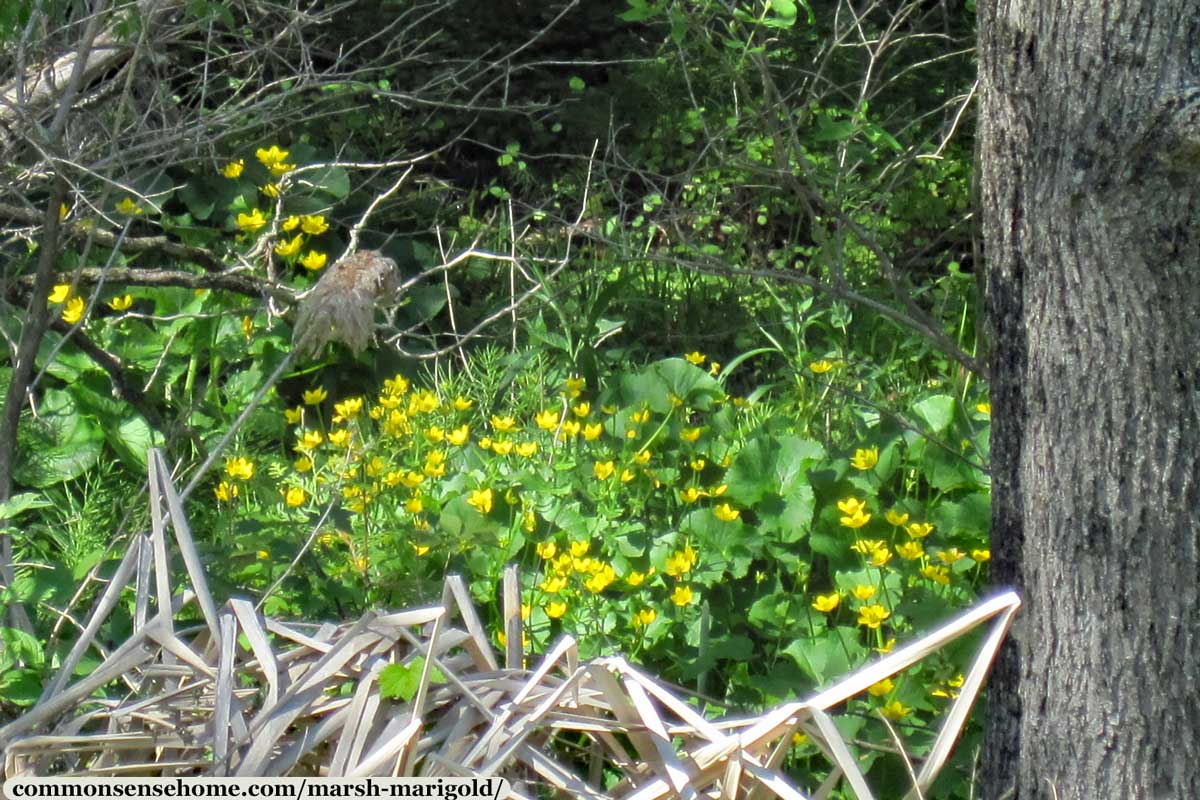
Marsh marigolds are perennials, coming back year after year. Once you’ve identified an area where they grow by their abundant flowers, it’s easy to come back in early spring to catch them at the best time for harvest before the buds open.
Identification
Plants are 1 to 2 feet in height (30-60 cm), and often grow in massive clumps and clusters.
The basal leaves are kidney shaped and toothless, ranging from 2-7″ (5-18 cm) wide, with long stalks and a deep notch where the stalk attaches. They remind me of water lily leaves.
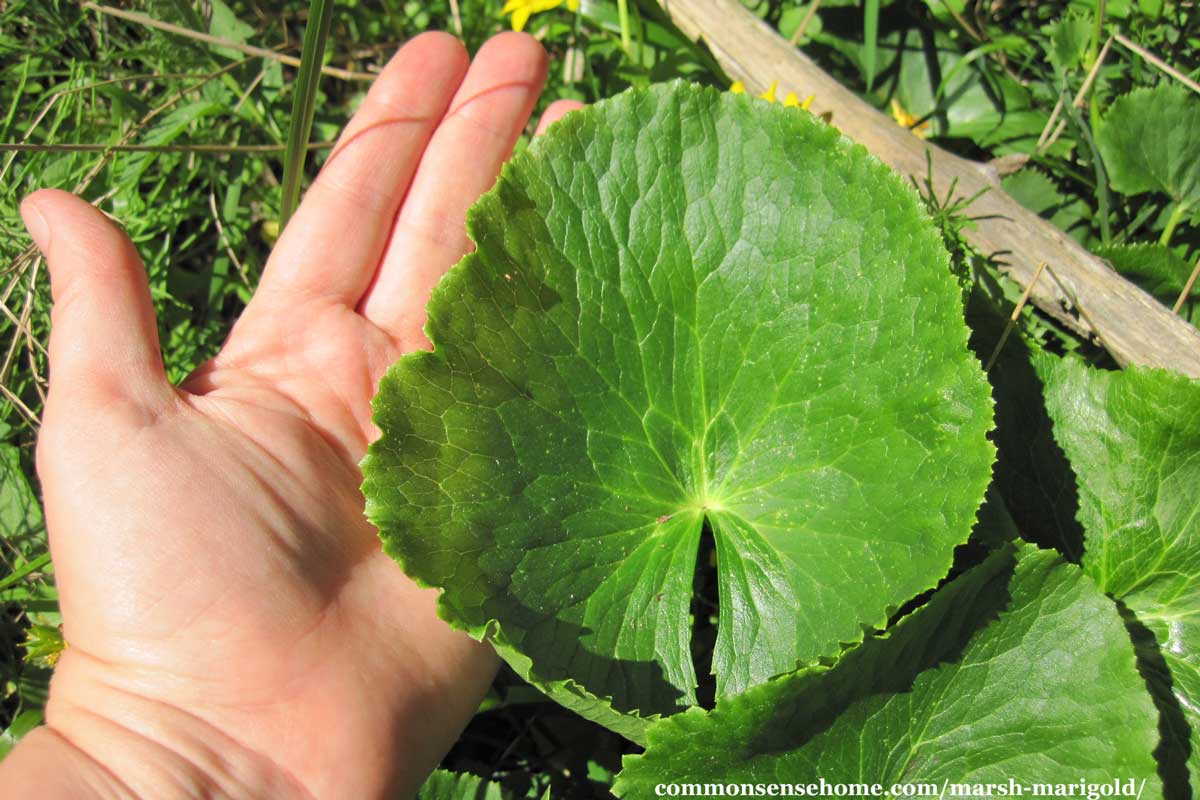
Upper stem leaves grow directly off the stalk, and are 1-2″ (2.5-5cm) wide. These heart shaped leaves sometimes nestle around the flower buds.
Marsh marigold flowers have 5-9 “petals”, which are actually yellow sepals that are 1-1 1/2″ (2.5 – 4 cm) wide. They look like large buttercups.
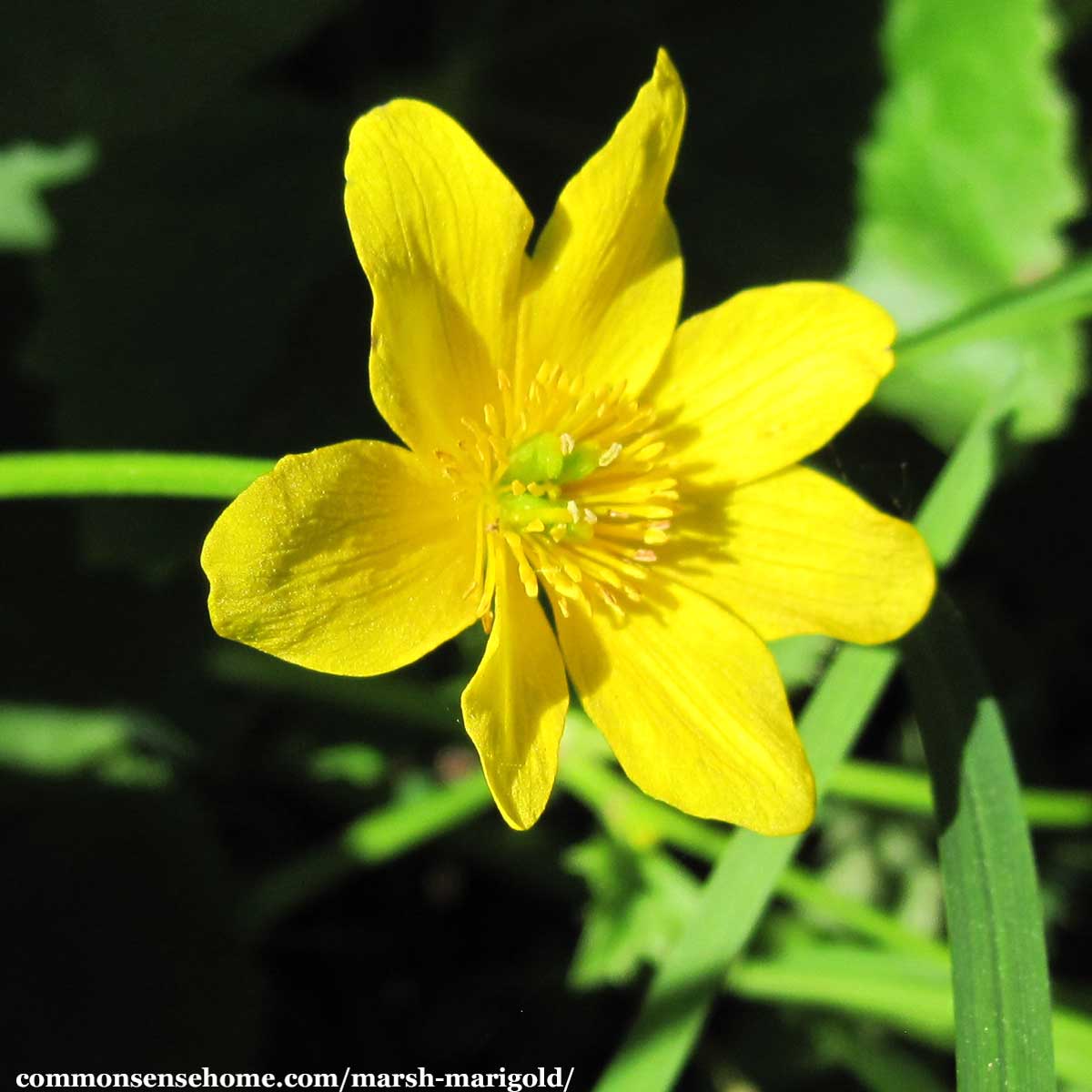
Flowers display at the top of the plant on hollow, branched stems, and appear in early spring (April/May). I remember church members picking cowslip flowers by the basketful for the kids to carry on Mother’s Day for First Communion.
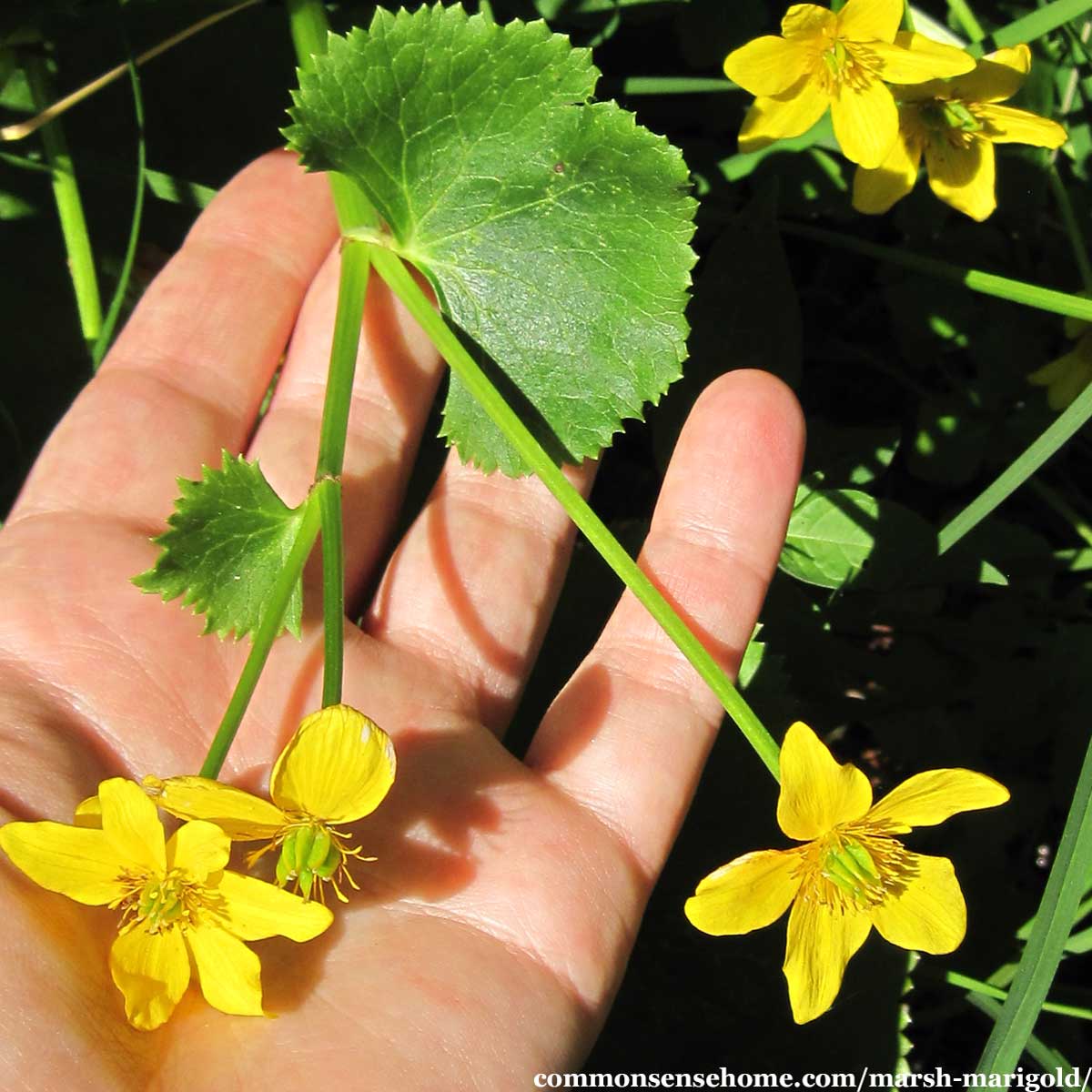
As the season progresses, plants produce small, green, starlike fruits.
Do Deer Eat Marsh Marigold?
Caltha palustris contains high levels of alkaloids and glycosides, so deer (and cows) don’t eat them.
Since they are some of the first flowers of spring, pollen and nectar eating insects such as bees and flies welcome marsh marigold blooms.
Several species of birds and rodents enjoy the mature seeds.
Is Marsh Marigold Safe to Eat?
This plant should not be eaten raw.
The whole plant contains the toxic glycoside protoanemonin. The amount of toxin increases as the plant gets older, and makes the plant taste strong and acrid as the season progresses.
Would you like to save this?
Cooking and drying break down the toxin and make the plants safe to consume.
Samuel Thayer notes that he knows of people who have eaten small quantities of the plant raw and suffered no ill effects, but I don’t recommend it.
The best time to harvest them for food is before they bloom. The buds can be cooked and pickled as a substitute for capers.
PrintMarsh Marigold Capers
Pickle the young and tender flower buds of Caltha palustris as a substitute for capers.
- Yield: 1 pint 1x
Ingredients
- 1 pint young, unopened Marsh Marigold flower buds
- 3/4 cup cider vinegar
- 1/4 cup water
- 2 Tablespoons light brown sugar
- 1/2 teaspoon salt
- 1/2 teaspoon mustard seed
- 1/2 teaspoon celery seed
Instructions
- Cover the marsh marigold buds with water. Bring to a boil and boil for 2 minutes. our off the water, cover with fresh water, bring to a boil and boil for another minute.
- Drain the buds and pack them into a sterilized canning jar.
- In a non-reactive sauce pan, combine the vinegar, water, sugar, salt, mustard, and celery seed. Boil for 10 minutes.
- Pour the boiling vinegar mixture over the flower buds; seal tightly and store the jars in a cool place. Let the buds sit in the pickling brine for at least a month before use. Place in the refrigerator for longer storage.
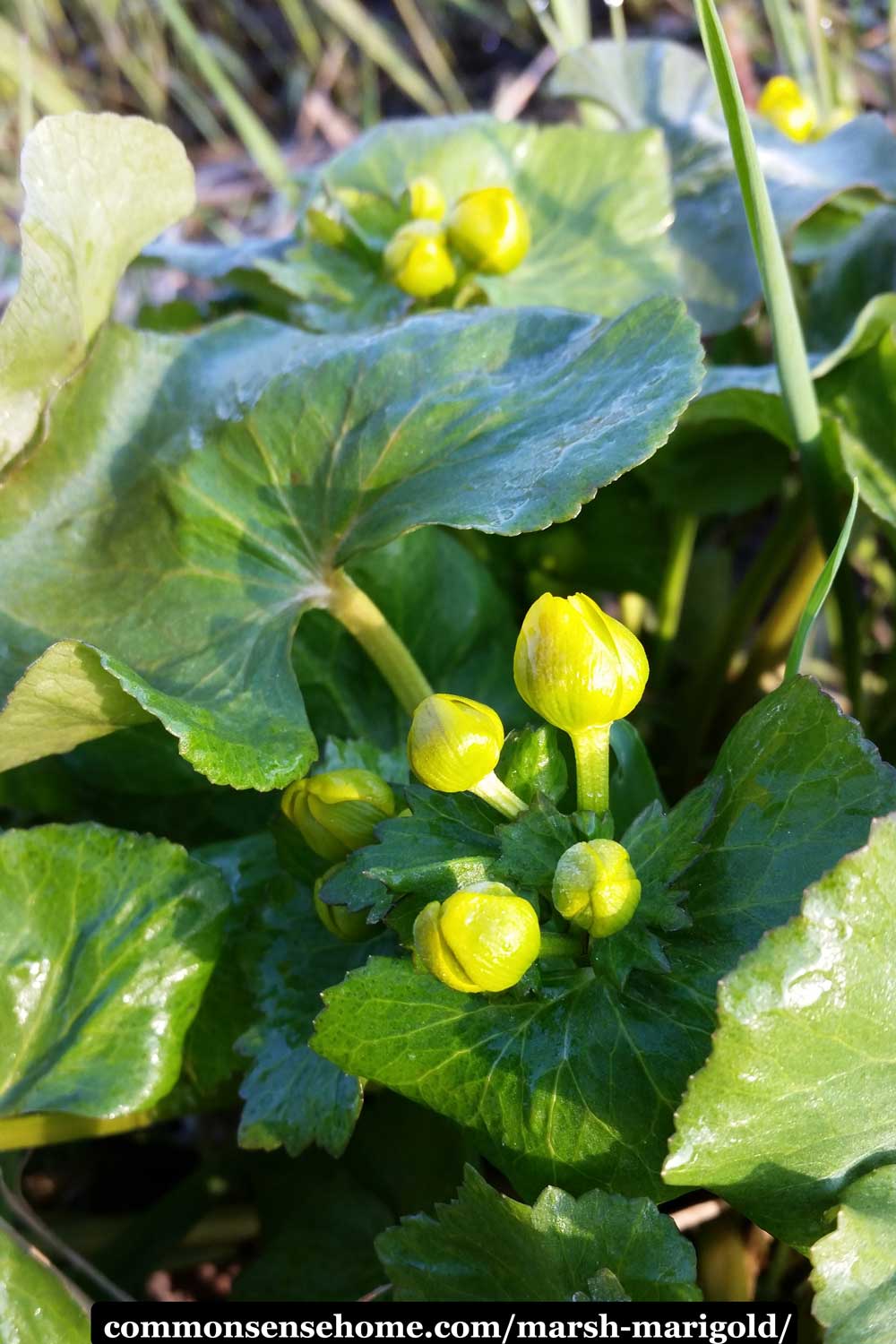
In The Forager’s Harvest, the author suggests cooking the young leaves and/or buds for 20 to 40 minutes in one or more changes of water.
He uses three changes of water for leaves, and cooks the beejeezus out of it. It turns into green goo he refers to as “green pudding”, which he serves with salt and butter.
Medicinal Use of Caltha palustris
Edible & Medicinal Wild Plants of Minnesota & Wisconsin notes that that roots, leaves and stems have a history of medicinal use, including treatment of:
- Urinary Problems
- Dysmenorrhea
- Bronchial and Sinus Infectiom
- Coughs
- Tuberculosis
- Rheumatism
- Facial Paralysis
- Warts
That said, as noted above, the raw plant contains irritating compounds. It can cause blistering and other skin irritation in sensitive individuals.
Also, large quantities of the tea consumed for multiple days may cause kidney and liver inflammation.
This post is for general information only, and is not meant to diagnose or treat any illness. Always exercise caution when using any wild plants, and make sure you have positively identified the plant.
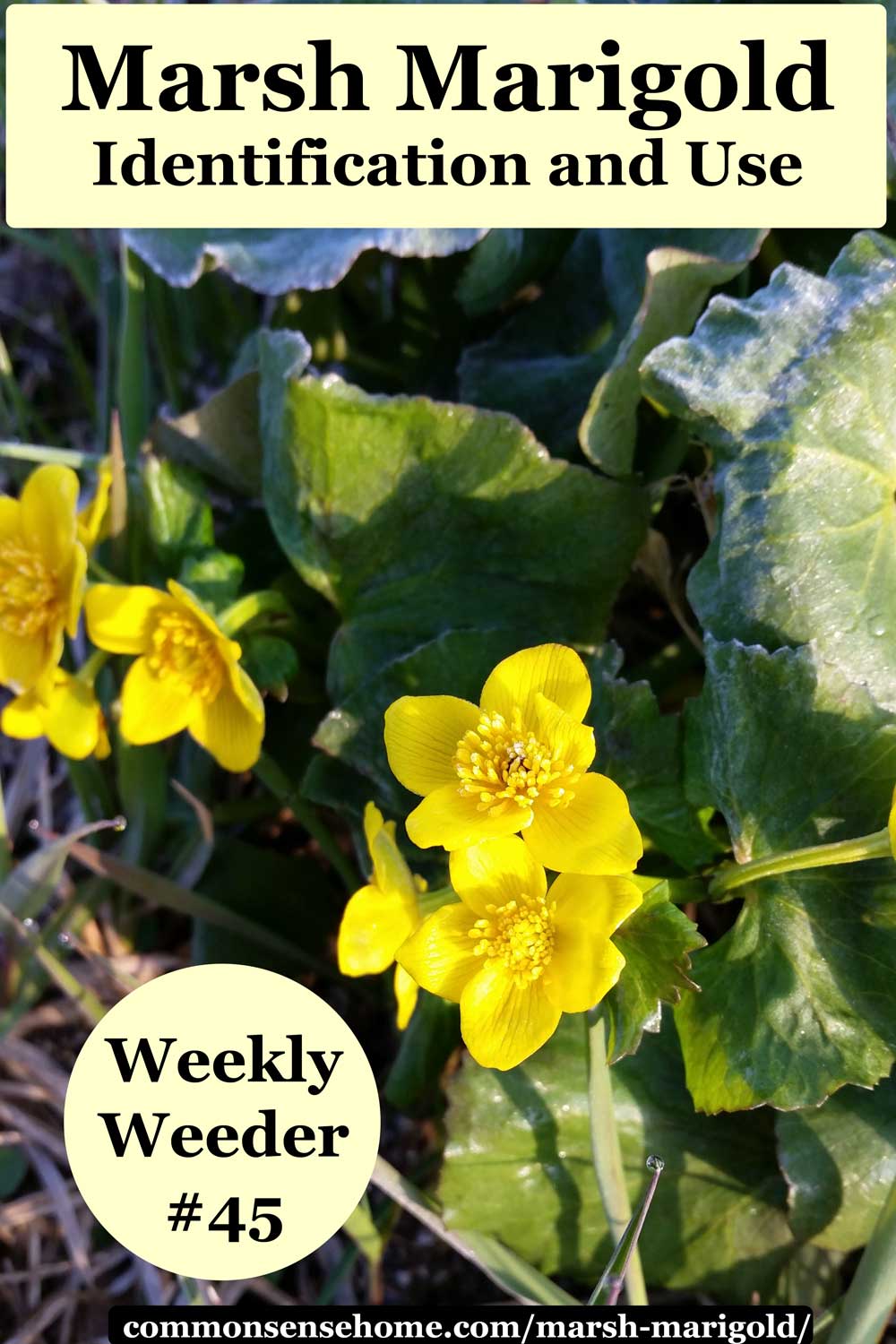
Additional Resources
The Weekly Weeder Series
This post is #45 in the Weekly Weeder series. You may also enjoy other Weekly Weeder posts, such as:
Catnip – Uses for People and Cats
Marsh marigolds aren’t my first choice for wild edibles, but many weeds have a long history of use for food and medicine. We need to learn to work with them instead of fighting them.
Please Like, Pin or otherwise share this post if you would like the Weekly Weeder series to continue.
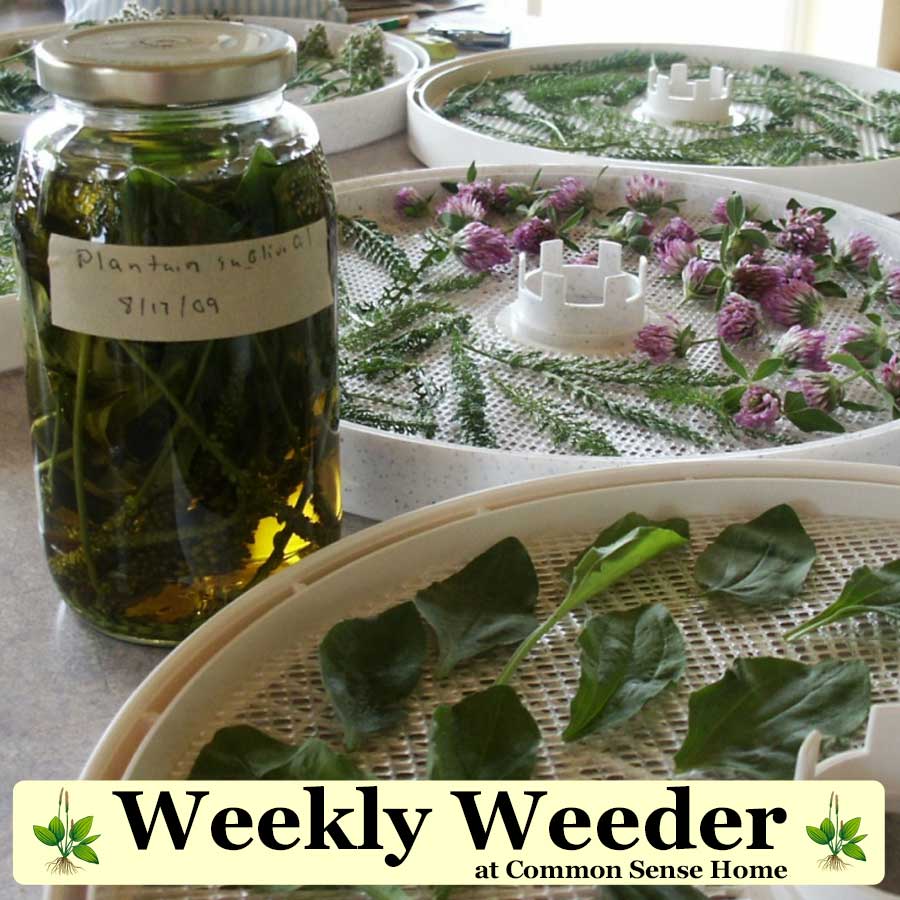
Originally published in 2014, last updated in 2020.


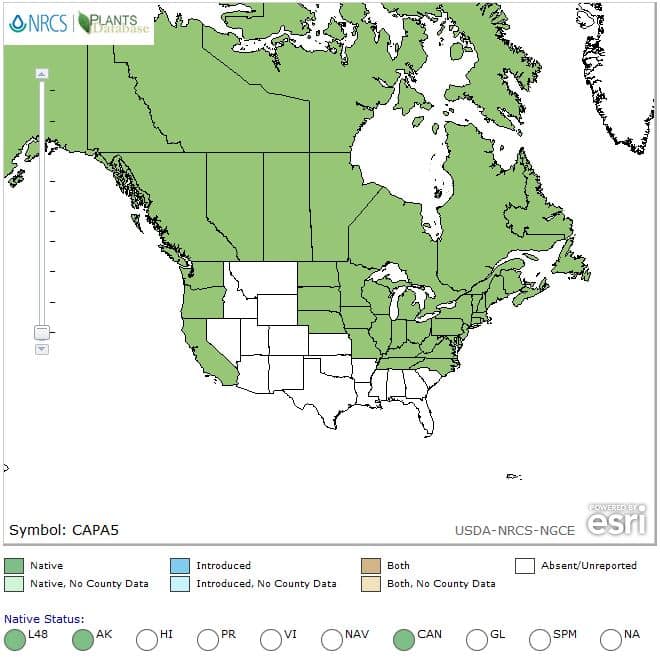
hi thanks for this info. I have these beauties on my property and amn wondering if I could use to treat my dogs wart on his knee but nowhere do I read how to use the marsh marigold for warts just that it is a good treatment. Do you know or know how to find out? thanks in advance for your time, Laura
Typically when a plant is recommended as a wart treatment, either the sap is applied or the plant in smashed and used as a poultice.